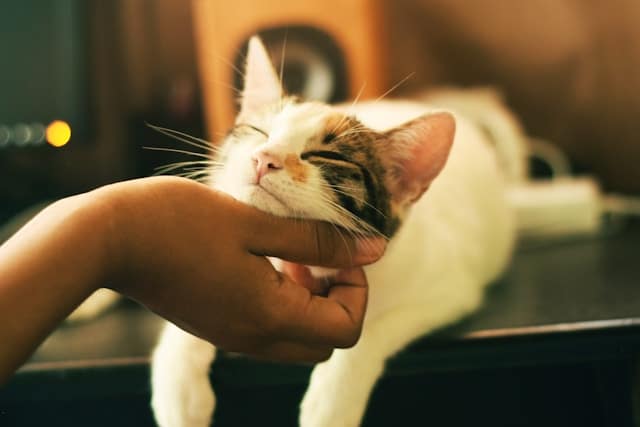How to Introduce a New Kitten to a Home with an Elderly Cat?

Integrating a new kitten into a home with an older resident cat can be a task fraught with challenges. However, it’s not an impossible feat. It’s a careful dance that requires time, patience, and understanding of both feline behavior and health. So, let’s delve into how you can make this transition smoother for all the inhabitants of your home.
Understand the Behavior of Cats
First off, understanding the behavior of both your resident cat and the new kitten is a vital step. Cats are territorial creatures by nature and introducing a new kitten into your older cat’s territory can create tension.
A lire également : What’s the Most Humane Way to Trim a Rabbit’s Nails Without Causing Distress?
Your older cat might display signs of dissatisfaction such as hissing, growling, or avoiding the kitten altogether. These reactions are normal as your resident cat is simply expressing discomfort about the sudden change in its environment. It’s critical not to panic or reprimand your older cat for this behavior as it is a natural response.
On the other hand, kittens are naturally playful and curious. Your new kitten might want to explore its new home and interact with the resident cat, oblivious to its older counterpart’s discomfort. To ensure a smooth integration process, aim to strike a balance between allowing the kitten to explore and restraining it from invading the older cat’s personal space.
Dans le meme genre : What Are the Best Practices for Socializing a Shy Whippet Puppy?
Preparations Before Bringing the Kitten Home
Before you bring the new kitten home, make some preparations. Designate a separate room for the kitten with all necessary amenities such as food, water, a litter box, and a cozy bed. This individual space will allow the kitten to adjust to its new surroundings without the added stress of meeting the resident cat right away.
Introducing the scent of the new kitten to your home and vice versa can greatly help in familiarizing both cats with each other. A simple way to do this is to swap bedding between the resident cat and the new kitten. This will allow both felines to get used to each other’s scent before they meet face-to-face.
The Introduction Process
The actual introduction of the new kitten to your older cat should be a gradual process. Do not rush it as that can impact the relationship between the two cats negatively.
Start by allowing the older cat to explore the kitten’s room while the latter is not present. This will help your resident cat get accustomed to the new scent without the added stress of the kitten’s presence.
Following this, allow both cats to sniff under the door of the kitten’s room. This is a safe way for both felines to get a sense of each other without any physical interaction.
Once your older cat seems to be more comfortable with the kitten’s scent, you can start having supervised face-to-face meetings. Keep these meetings short and always end them on a positive note.
Monitoring Health and Behavior Changes
Monitoring any changes in behavior or health in both cats is crucial during this period. A sudden change in behavior, such as the older cat becoming more reclusive or the kitten displaying signs of stress, may indicate that things are not going as well as planned.
Similarly, observe for any health issues. Stress can sometimes trigger health problems in cats. Any drastic change in appetite, bathroom habits, or energy levels warrants a visit to the vet.
If you have a dog in the house, the process may become a bit more complex. But the same principles of gradual introduction, scent familiarization, and careful monitoring of behavior and health apply.
Seeking Professional Help if Needed
If, despite your best efforts, the cats are not getting along, do not hesitate to seek professional help. A professional cat behaviorist can provide you with insights into feline behavior that you might have overlooked. They will also provide you with a customized plan that suits the specific needs of your feline friends.
Remember, bringing a new kitten to a home with an older resident cat is a process that requires patience and understanding. But with time, most cats will learn to accept, and even enjoy, each other’s company. Keep in mind that each cat is unique, and its ability to adapt to new situations and companions will vary. Always respect their individual needs and give them the time and space to adjust at their own pace.
Long-Term Relationship Building
When introducing a new kitten to an older cat, it is not a one-time event, but rather a process that can take weeks or even months. It is crucial not to rush things and always keep the comfort of your resident cat in mind.
After the initial introduction, keep encouraging positive interactions between the two cats. You can do this by playing with both cats together, using toys that encourage cooperation and not competition.
When both cats seem relaxed in each other’s presence, allow them to spend more time together without supervision. However, always provide escape routes or high places where the cat can retreat if they feel threatened.
Reward both cats for good behavior. This could be a treat, praise, or a stroke after they’ve had a successful interaction. This will help to associate positive feelings with the presence of the other cat.
However, do expect occasional squabbles as your cats get to know each other and establish their territory. This is a normal part of the process. Unless these fights become frequent or violent, there is no need to intervene.
Remember, you’re building a relationship that will hopefully last for years to come. It’s worth the extra time and effort to ensure a smooth transition for both your older cat and the new kitten.
Conclusion: A Happy Home for Both Cats
Introducing a new kitten to a home with an older resident cat may seem daunting. It’s a delicate process that requires careful planning, patience, and understanding of feline behavior.
Always keep the comfort and safety of your resident cat in mind. Create a separate space for the new kitten and introduce them gradually. Use scent familiarization to help both cats get used to each other. Monitor for changes in behavior and health in both cats and seek professional help if needed.
Above all, remember that each cat is unique. Their ability to adjust to new situations and companions will vary. It is a transition phase for everyone involved, so take your time, and do not rush.
With patience, understanding, and love, your older cat and kitten can live harmoniously under one roof. This might not happen overnight, but with time, most cats will learn to accept, and even enjoy, each other’s company.
In the end, the goal is to create a happy, peaceful home where both your senior cat and kitten feel safe, loved, and comfortable. And the effort you put into this process will be worth it when you see your cats happily coexisting and perhaps even becoming the best of friends.
